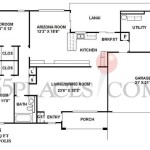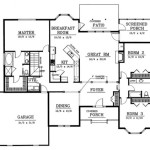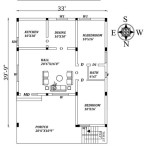Traditional Colonial House Plans
Traditional colonial house plans evoke a sense of history and timeless elegance. Rooted in the architectural styles brought to America by European colonists, these homes offer a unique blend of classic design and practical functionality. Understanding the nuances of various colonial styles can help prospective homeowners choose a plan that best suits their needs and aesthetic preferences.
Several distinct colonial styles emerged during the 17th, 18th, and 19th centuries, each reflecting the cultural influences of the respective colonizing powers. Key variations include Georgian, Dutch Colonial, French Colonial, Spanish Colonial, and Cape Cod styles. Each style boasts unique characteristics that distinguish it from others, contributing to the rich tapestry of colonial architecture.
Georgian Colonial homes, popular throughout the 18th century, are known for their symmetrical facades, multi-paned windows arranged in balanced patterns, and prominent entryways often featuring decorative crown molding and pilasters. These homes typically have two or three stories and are characterized by a sense of formality and grandeur.
Dutch Colonial houses, prevalent in the Mid-Atlantic region, are readily identifiable by their gambrel roofs, which have two slopes on each side. This distinctive roofline creates additional usable space in the attic or top floor. Dormers, often featuring flared eaves, are another common feature of Dutch Colonial architecture.
French Colonial homes, primarily found in the southern United States and influenced by French settlements, often incorporate wide verandas or porches, tall windows and doors to maximize airflow in warm climates, and steeply pitched roofs. Stucco or brick exteriors are common, reflecting the building materials readily available in the region.
Spanish Colonial architecture, prevalent in the Southwest and influenced by Spanish settlements, features stucco walls, red tile roofs, arched doorways and windows, and decorative ironwork. Courtyards and enclosed patios are also common elements, designed to provide shade and privacy.
Cape Cod homes, originating in New England, are characterized by their simple, symmetrical design, steep roofs designed to shed snow, and a central chimney. These homes are typically one or one-and-a-half stories and often feature dormer windows for added light and space in the upper level.
When considering traditional colonial house plans, understanding the floor plans is crucial. Colonial homes often feature a center hall plan with rooms arranged symmetrically on either side. Formal living and dining rooms are typically located on the main floor, while bedrooms are situated on the upper levels. Modern adaptations of colonial plans may incorporate open-concept layouts to accommodate contemporary living preferences.
Exterior features contribute significantly to the overall aesthetic of a colonial home. Beyond the defining characteristics of each style, materials such as wood siding, brick, and stucco play a crucial role in establishing the home's character. Window styles, including double-hung, casement, and dormer windows, further enhance the home's architectural appeal.
Interior design elements also contribute to the authentic colonial feel. Features such as wide-plank wood floors, exposed beams, and fireplaces evoke a sense of history and warmth. Choosing appropriate furnishings and décor can further enhance the colonial ambiance.
Adapting traditional colonial house plans to modern lifestyles is a common practice. While maintaining the classic exterior aesthetic, interior layouts can be modified to incorporate open floor plans, larger kitchens, and updated amenities. These adaptations allow homeowners to enjoy the charm of a colonial home while meeting the needs of contemporary living.
The enduring appeal of traditional colonial house plans lies in their timeless elegance and connection to history. By understanding the distinct characteristics of each colonial style, prospective homeowners can choose a plan that reflects their personal preferences and creates a home that stands the test of time.
Careful consideration of site orientation and local climate is essential when selecting a colonial house plan. Factors such as sun exposure, prevailing winds, and potential for snow or rain should influence decisions regarding roof pitch, window placement, and porch design. Proper site planning can maximize energy efficiency and comfort.
Consulting with an architect or experienced builder is highly recommended when undertaking a colonial home project. These professionals can provide valuable guidance on adapting traditional plans to meet specific needs and site conditions. They can also ensure that the chosen design adheres to local building codes and regulations.
The process of selecting and building a traditional colonial home requires careful planning and attention to detail. However, the result is a timeless and elegant residence that reflects a rich architectural heritage and provides a comfortable and inviting living space for generations to come.

Colonial Manor House Plans For A Traditional 4 Bedroom Home

1923 Colonial House Plans Vintage

Classic Colonial Home Plan 32563wp Architectural Designs House Plans

Morgan House Plan Suggestions Building With Assurance Colonial Plans Vintage

Colonial House Plans Floor Modern Thd

House Plan 59952 Traditional Style With 1870 Sq Ft 3 Bed 2 Ba

Center Hall Colonial House Plan 44045td Architectural Designs Plans

Classic Colonial 1a Floor Plan Barn Home Davis Frame

Brick Home Plan With Seven Bedrooms 4711 Grand Colonial 2902

1920 Harris Homes Colonial Revival 2 Story Classic House Plans Traditional Vintage








